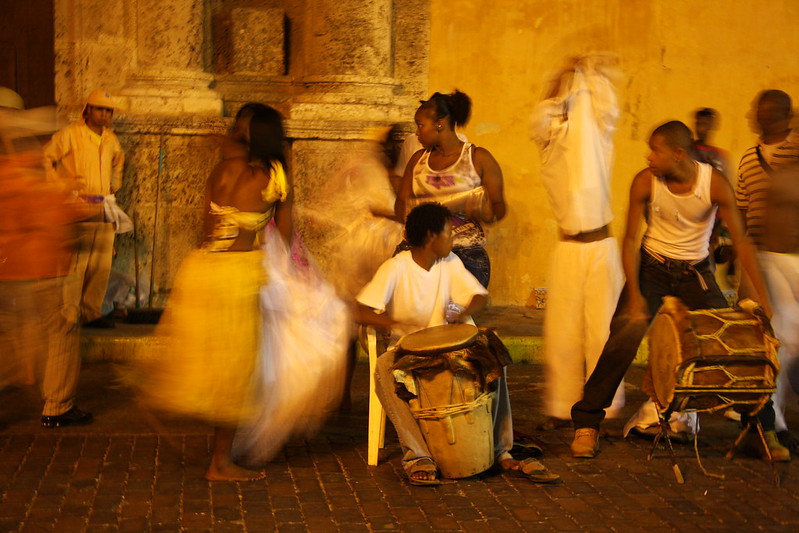Cultural Identity: The Soul of Cumbia

Cumbia is not just a genre of music; it’s a pulsating heart in the body of Latin American culture, a vivid tapestry that weaves together stories, identities, and traditions. Let’s dive into the colorful world of Cumbia and explore how it has become a symbol of cultural pride and social connection across Latin America.
The Beat of National Pride
In Colombia, Cumbia is more than music; it’s a national treasure. It’s the soundtrack of the country, echoing through the streets during the Carnaval de Barranquilla. Songs like “Yo Me Llamo Cumbia” by Mario Gareña not only get feet tapping but also swell Colombian hearts with pride, symbolizing the nation’s rich cultural mosaic.
The Social Fabric of Cumbia
Cumbia brings people together, transcending age, class, and background. It’s the rhythm that unites – from the rural celebrations in the Colombian countryside to the vibrant cumbia clubs in Buenos Aires.
Each corner of Latin America has its own Cumbia flavor. In Mexico, tunes like “Cumbia Con La Luna” by Control turn every gathering into a fiesta. In Argentina, “La Cola” by Los Palmeras has become a staple at family reunions and street parties.
Peru’s Chicha Cumbia, with its psychedelic twist, offers a different taste compared to the electronic-infused Cumbia tracks popular in clubs across Buenos Aires. In Chile, bands like Chico Trujillo have infused Cumbia with rock and ska, creating an entirely new musical experience.
Cumbia’s Gender Revolution
Cumbia has been a subtle revolutionary in terms of gender roles. The dance floor is a place where stereotypes are challenged, and norms are rewritten. Female Cumbia artists, like Carmen Rivero, have been instrumental in this, showcasing strength and independence through their music and performances.
Cumbia and Social Commentary
Cumbia is a voice for the voiceless, a medium where artists like Totó la Momposina use powerful lyrics to tackle issues like inequality and cultural heritage. Cumbia is not shy about addressing the tough stuff. In Mexico, Los Angeles Azules blend Cumbia with tales of urban life, creating a soundtrack for the masses.
Globalization has taken Cumbia from Latin American streets to the world stage. In cities across the US and Europe, Cumbia nights attract diverse crowds, uniting them with infectious beats. Songs like “La Cumbia Cienaguera” have become anthems for Latin American immigrants, reminding them of home.
Cumbia’s Artistic Influence
Cumbia’s rhythm has spilled over into other art forms. It has inspired literary works like Gabriel García Márquez’s novels, where the essence of Cumbia helps paint a picture of Caribbean Colombia. View Archive of Gabriel García Márquez’s Novels Here
In film, Cumbia soundtracks in movies like Los Viajes del Viento bring stories to life with authentic Colombian beats. Watch Los Viajes del Viento Here
Cumbia as Heritage
Cumbia’s story is ongoing, with each beat a testament to its enduring appeal. This genre isn’t just music; it’s a cultural phenomenon, a unifying force that resonates with people of all ages and backgrounds, echoing the vibrant spirit of Latin America.
For those eager to immerse themselves in the world of Cumbia, there’s a wealth of music, literature, and film waiting to be explored. From the classic sounds of Andrés Landero to the modern beats of Systema Solar, the journey through Cumbia’s heart is as enriching as it is exhilarating.
Efforts to preserve Cumbia’s rich heritage are in full swing. From festivals celebrating traditional Cumbia in Colombia to documentaries chronicling its history, there’s a concerted effort to keep this cultural gem shining for generations to come.
Photo credit: begonyaplaza @ Flickr